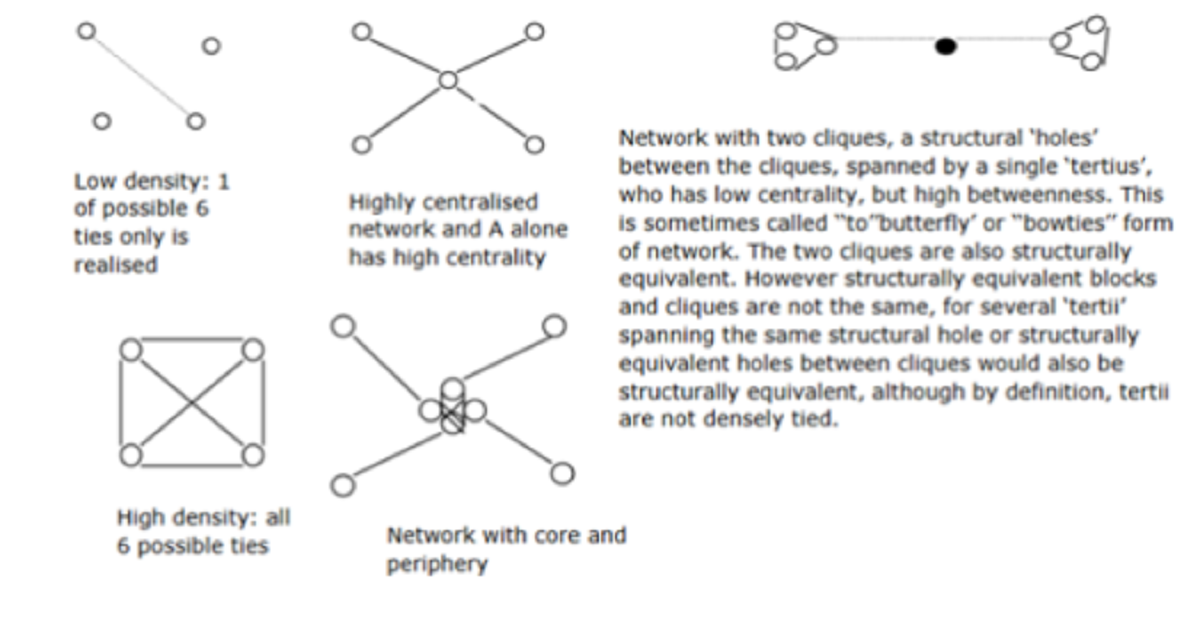networks in theory

Although we are often made to think that we should “go it alone”, we are in fact not alone. We are all part of a larger system that comprised of many unique and interconnected parts. Often, if we strive to become more integrated into our environment, we gain some sort of benefit whether it be from knowledge sharing, support, or the power of collective action.
One way to become more ingrained into our environment is through the development of networks. In their simplest form, networks are the connection between different parts of a system. When people or organizations connect with one another, the connected is based on shared interest or motivation in achieving a common outcome or linking goal.
The network serves as a communication platform and fulfills functions according to the members’ demand. How the connection functions is based on the type of network itself, including the types of relationships between the participatory people and organizations. Such relationships are both complex and dynamic, and they provide the infrastructure necessary to enable participants to share knowledge and develop communities.

These communities facilitate an environment conducive for coordination and joint action. The extent and scope of the joint activity as well as the management style is directly related to the purpose and objectives of both the individual members and the network itself, with each network being individual in nature. Characteristics can be classified according to:
- Internal Structure: the composition of a network, e.g. centralization, density and the strength of the ties between members
- Content: the subject matter of network communication
- Symmetry: the distribution of benefits and communication, i.e. is there a reciprocal relationship between members
- Functions: the purpose of the network and how and if the objectives are realized
- Institutional Form: the institutional structure of the network, e.g. rules, norms, ties, etc.
- Styles of Learning: knowledge and education management – incidental or principal in purpose
- Types of Activities: how network members interact
Based on these characteristics, networks can be classified into three categories, informal networks, community networks and formal networks. Informal networks are casual and often non-binding. Community networks are usually related to a specific need or demand. Mommy and me communities are a common type of community networks. Formal networks are those that have specific purposes and rules for joining. Formal networks are often professional in nature.
Based on the type and structure of the network as well as the constitution of the membership, five types of benefits can be achieved. They include individual gains; 2) community building; 3) sharing and learning; 4) coordination; and/or 5) collaboration and joint undertaking.
image credit:
- Goodwin et al. (2004)
- https://www.comlinx.com.au
sources:
- Deutsche Gesellschaft für Internationale Zusammenarbeit (GIZ) GmbH. (n.d.). Work the Net: A management guide for existing and emerging formal networks.
- Goodwin, N., Perri, 6., Peck, T., Freeman, R., Posaner, R. (2004). Managing Across Diverse Networks of Care: Lessons from Other Sectors.
- Knoke D, 1990, Political networks: the structural perspective, Cambridge University Press, Cambridge.
- White, HC (1981) Where do markets come from? American journal of sociology, 87, 517-547.




